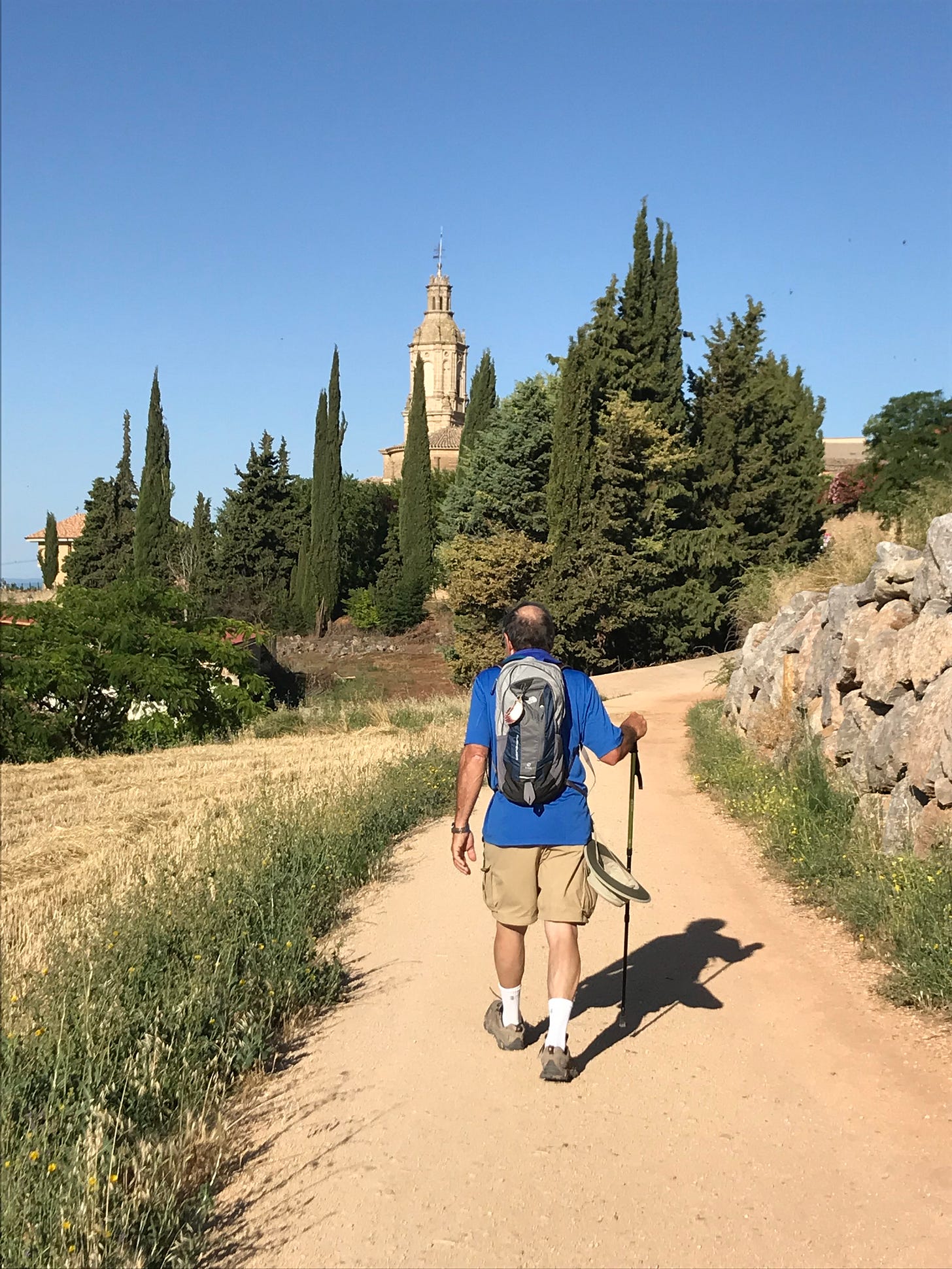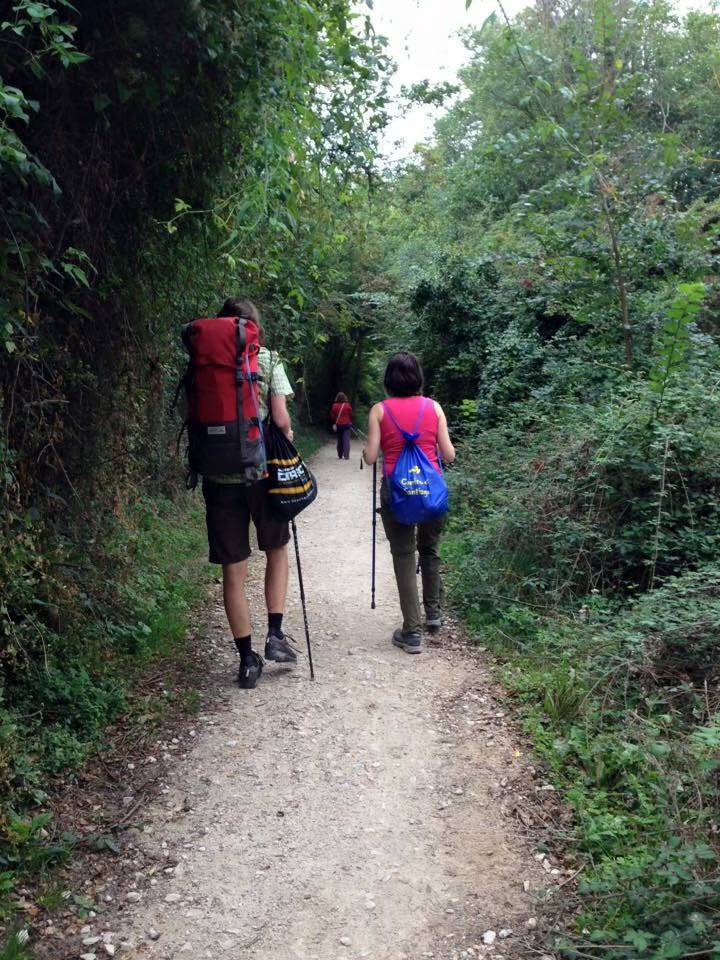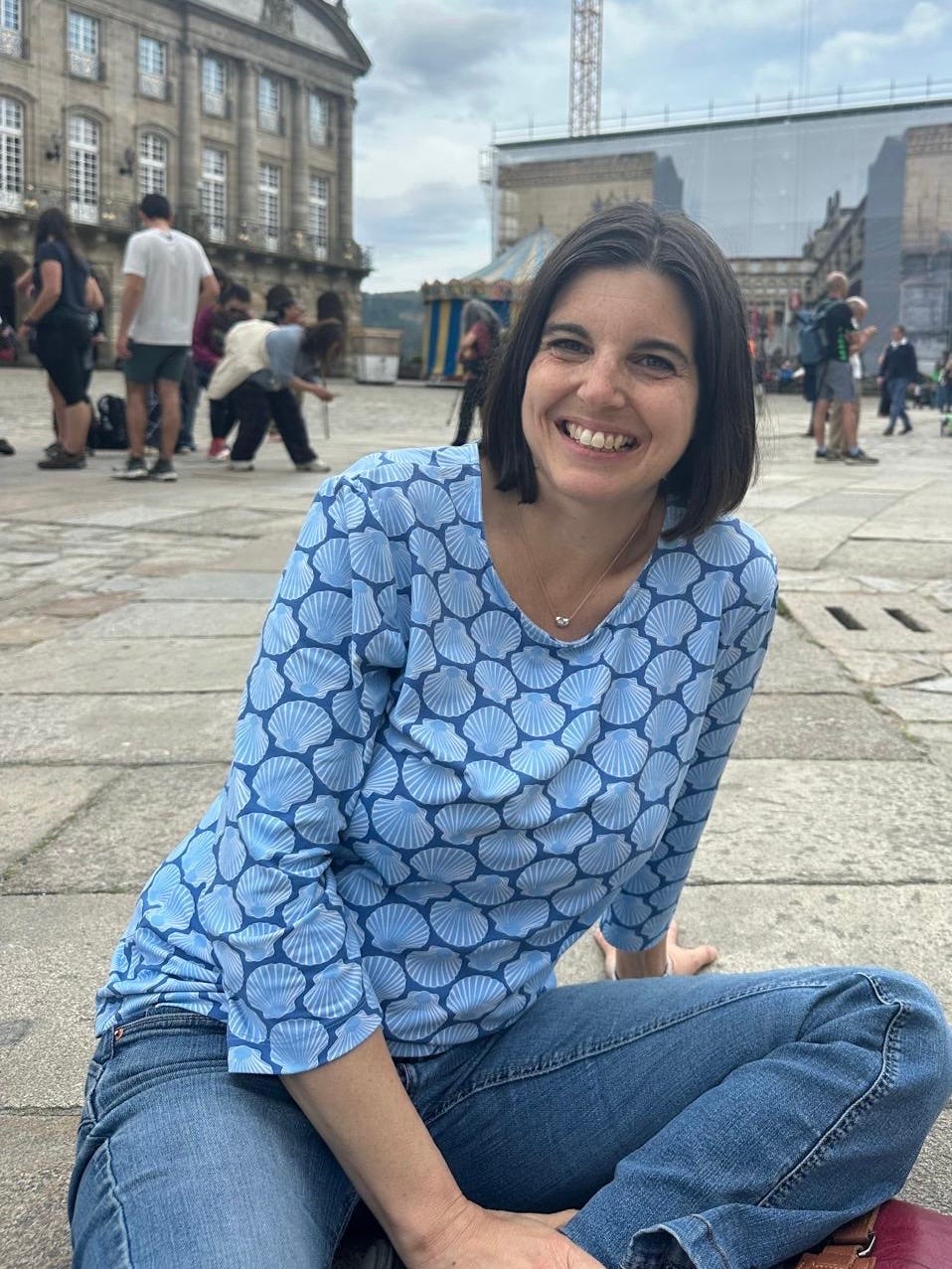022: The Things We Carry (On the Camino)
Or. . . the things we don't carry.
Hello Camino friends! Here’s what’s in this issue:
📆 “The Things We Carry (On The Camino)”
🧳Q&A: How to Send Your Luggage on the Camino
📸Scenes from the Camino
💻What I’m Reading
🎥I’m going live on Substack! Would love to see you there.
🥾How to get help planning your Camino.
Are you getting my posts directly to your email or Substack feed? If not, click here to join us.
“What’s the Camino?”
❓Not even sure what the Camino de Santiago is? Start here.
🤔Heard of the Camino but not sure if it’s for you? Read this.
Let’s get started!
The Things We Carry (On The Camino)
The man did not look well. His face was bright red, his body dripping in sweat. His hat protected his head and neck from the sun that was beating down, but that clearly wasn’t sufficient.
Thankfully, my father is a volunteer Emergency Medical Technician (EMT). We stopped walking to see if our fellow Camino pilgrim needed help. He was out of water, so we gave him ours. He said he was stopping his day’s walk in the next town, which we could see from where we were standing.
“He’s sweating, so he’s not having a heat stroke,” my father informed me. “If he stops sweating, that’s a problem. A big problem.”
“I’m not sure I’ll be able to finish my Camino in this heat,” the man told me in his native French. I commiserated with him and then noticed the size of his backpack.
“You know,” I told him, searching my mind for the French words, “you don’t have to carry your backpack.”
His eyes scrunched together in confusion.
“There are companies that will bring your bag to the next town.” I turned my back to him, showing him my day pack. “I had to end my Camino once because of the heat,” I explained. “So now I send my bag ahead. My father, too.”
The Frenchman asked how one finds such services. “Wherever you’re staying, just ask them. They’ll give you an envelope, you write your destination on it, put Euros in the envelope—usually five or seven—and they’ll pick it up in the morning. It will be at your accommodation in the afternoon.”
He told me he had no idea this was an option.
A Lighter Way Forward
A few days later, a man stopped us on the trail. Neither my Dad nor I recognized him. “I wanted to say thank you for telling me about the bag service,” he said in French.
“It’s you!” I said. I turned to my Dad. “It’s the guy we met a few days ago—the one who didn’t know he could send his pack!” He looked so much better that, at first, he was unrecognizable to us.
“If it wasn’t for you, I wouldn’t have been able to continue on my Camino. Thank you.”
The "Real Pilgrim” debate
There are some who will say a “real” pilgrim carries a backpack. I used to be one of them. And then I let go of care or concern for how anyone else does their Camino. And make a good effort to let go of my judgement of others in most contexts.
I usually don’t engage in “real pilgrim” debates. But if I did, I’d ask,
When you say ‘real’ pilgrim, to which time period are you referring?
Because Medieval pilgrims didn’t have backpacks—nor dry-wicking shirts, hiking shoes, cell phones.
That app you’re using? It wasn’t available until 2012.
That dry-wicking shirt you’re wearing? Late 1980s.
Lessons from Lois
I remember the first time I sent my pack ahead. I had no injury. It wasn’t a heat wave. I was with my friend Lois who was 73. She had age as a reason. “What should I tell people if they ask me why I’m not carrying my pack?”
We came up with some great ideas:
“My pack? You mean it’s not on my back?! I must have left it in the last town!”
“I’m not carrying my pack in case I have to carry Lois.”
“The better question is, ‘Why are you carrying yours?’ ”
And then Lois said, “People can’t have a one-sided conversation.” In other words, I didn’t have to explain at all.
My Advice
“Do you have any advice?” she asked. I was volunteering in the Pilgrim Office in Saint-Jean-Pied-de-Port, France. I had given the young woman her Camino credential and her first stamp. I had gone over the water stops and important landmarks on the route across the Pyrenees.
Most pilgrims are eager to then get to their accommodation or explore the idyllic town. But sometimes, they have more questions. Usually very specific ones. (Where’s the ATM? Where can I buy hiking sticks?) But sometimes, they have more time. Maybe they realize the wealth of information sitting in front of them. More likely they are nervous and still trying to gain as much reassurance as they can. So they ask for advice.
I can talk for hours upon hours about the Camino. I teach a course on preparing for the Camino. I guide people on the Camino.
But what I say is this:
Listen to your body. It’s not a race. Some people get caught up walking with others they meet. Which is fine—but be sure to listen to your body. If you’re body says you need a rest or a drink, do that. And if you are in any way injured or wondering if you can continue, know that there are services that will bring your luggage to the next town.
“Oh, I won’t need that,” she reassures me. I let that go. None of us can predict the future.
“You might not,” I say. “But there are people out there that don’t know that service is available. So please spread the word.”
🧳Q&A: How to Send Your Luggage on the Camino
Q: Who offers these services?
A: Companies like Correos (the Spanish postal service), Jacotrans, and Pilbeo, among others.
Q: Is it safe?
A: Yes. These companies are transporting hundreds of bags every day. Obviously, don’t send anything of great value.
Q: What if my bag isn’t there when I get to my hotel?
A: Ask the staff. They know what time the bags usually arrive. Be sure you know what company you sent it with.
Q: Can I decide at the last minute, or do I need to book ahead?
A: You can do either! Many companies let you book online, via phone, or WhatsApp up until about 8 pm the night before.
Q: How do I actually coordinate it?
A: Most accommodations have envelopes you can use for various transport companies. You write your name and next destination on it, drop in cash (usually €5–€7), and leave it with your bag before 8 am. You may have to send them a message via WhatsApp if it’s your first time using their service.
Or, you can book it all ahead of time on their website.
Or a combination of the above. I’ve booked and paid for luggage transport with Correos and then added my accommodations at a later date as I knew them.
📸Scenes from the Camino
A first: a video instead of pictures. Let me know your thoughts!
Another reason not to carry a backpack. . . Note: This was back in 2019. My phone and my father’s phone had vastly different opinions on how far we had walked. Also, note the temperature towards the end of the video. (Not that I need a reason. . . )
🎥Join me for live interviews here on Substack!
Sure, I can tell you all about how to train for, plan, and walk the Camino de Santiago. But what’s better than me? Conversations with others (45+) who have done it!
Wednesday, July 23, 11-11:45 ET: I’ll be live from the Camino Ingles!
Wednesday, July 30, 11-11:45 ET: Maria Seco teaches pilgrims the Spanish they need to make the most of their time on the Camino de Santiago.
Wednesday, August 13, 11-11:45 ET: Hana Maris — Last August, at age 65, Hana walked the Camino Primitivo.
💻What I’m Reading
Lately I’ve been reading tons of online resources about the Camino Inglés as
I’m going to start walking that route tomorrow.
It may be the route I choose to lead a group on in October.
It translates to the “English Way” as the pilgrims who came from England would arrive to the ports of Ferrol or A Coruña and start their walk from there. I’m doing it over the course of six days. (See above—I’ll be sharing my experiences live on Wednesday at 11am ET.)
🥾Ready to start planning your Camino?
Rebecca Weston is an American who walked her first Camino in 2012.
She helps people 45 and over plan their own walks on the Camino de Santiago through her business The Camino Calls.
She and her husband live in Spain in a town of 6500 people on the Camino del Norte. She’s walked more than a dozen Caminos, spent many days volunteering along the trail, and if she’s not walking one now, she’s planning the next—and would love nothing more than to help you plan yours, too.





I carried my pack on all my Caminos because I had not planned ahead.
If you are sending your big pack ahead, you will need a regular day pack for water, food, rain jacket, first aid kit ... just like a regular hike in the woods.
But most people who decide to send their big packs ahead don't have a daypack. They stuff water bottles in their pockets, get a thin bag with string that cut into your shoulders, carry things in their hands ... which seemed much more uncomfortable than carrying your pack.
So it would seem that if you are sending your backpack ahead (a great idea), plan ahead and bring a day pack.
Though I haven't yet done a Camino, I've really come around to this way of doing things on thru-hikes (sending the backpack ahead). It makes the journey so much more enjoyable.